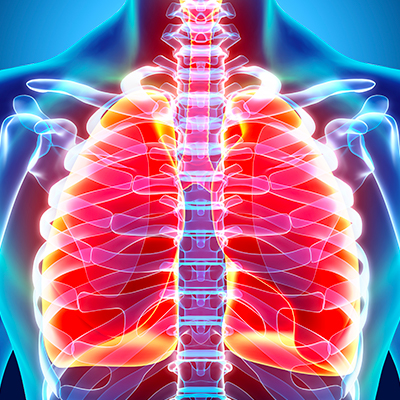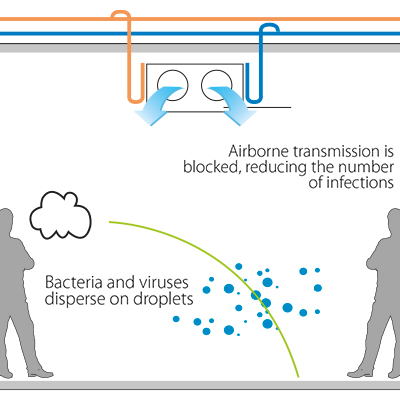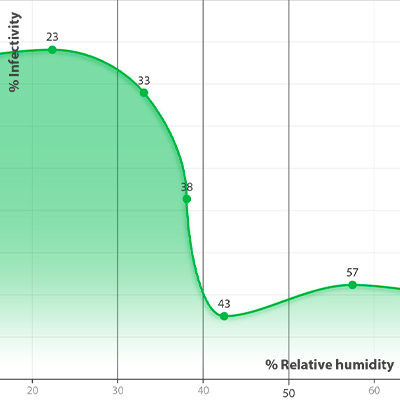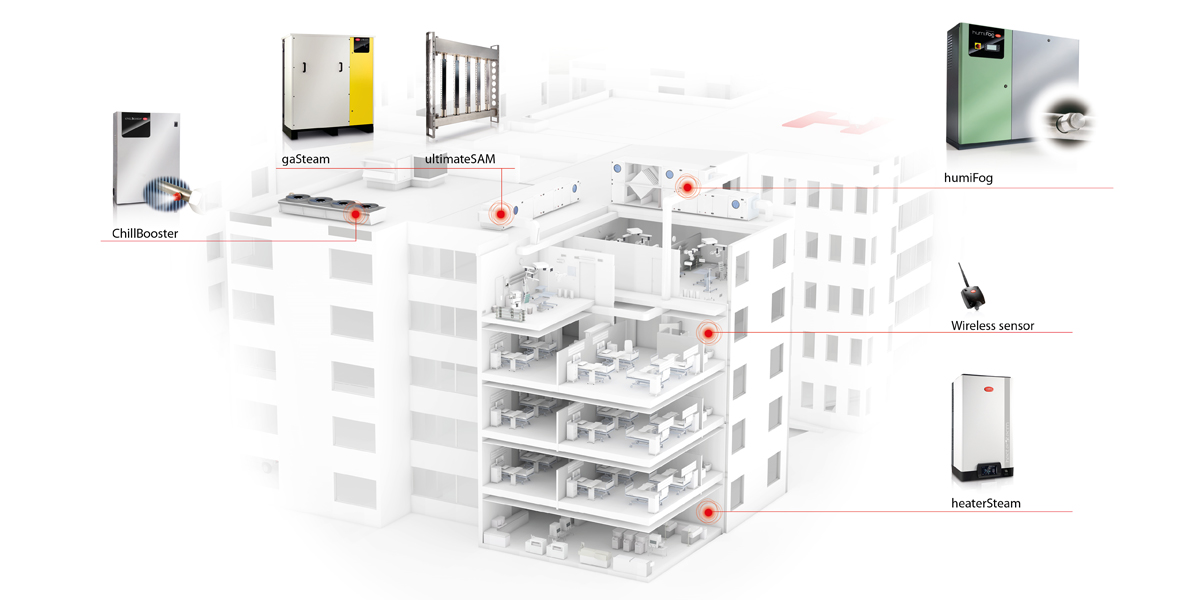Why is air temperature and humidity control important in healthcare facilities?
Our experience in improving air quality
Indoor environments are very important to us. Perhaps we don’t think about it, but on average we spend around 90% of our day indoors, and we are significantly influenced, for better or for worse, by the air quality inside the buildings where we spend our time.
For the most part, the conditions inside buildings depend on the properties of the air we breathe, also known as indoor air quality. With regard to modern buildings, which are increasingly well insulated, the indoor air conditions are mostly determined by how the HVAC system (heating, ventilation and air conditioning) meets the temperature-humidity needs of the human body.
Consequently, one element in particular is crucial for improving personal well-being in healthcare facilities. This is the quality of the air inside the building and above all the control of air humidity. Scientific evidence shows that keeping air relative humidity between 40 and 60% has significant benefits on human health. This humidity range is ideal to ensure the effectiveness of our immune defences and at the same time minimise the spread of viruses in the air.
Main BENEFITS
Impact of air humidity control on human health
 Strengthens immune defences
Strengthens immune defences
Our respiratory system is the first stage in our immune defence against viral infections, such as flu, respiratory syncytial virus (RSV) and the recent COVID-19 coronavirus. Relative humidity between 40 and 60% ensures the right viscosity and thickness of the mucous, in which numerous epithelial cilia trigger a protection process known as “mucociliary clearance”. This process is of fundamental importance for our health, as in normal conditions it traps and clears most of the pathogens we breathe in.
 Reduces the spread of viruses
Reduces the spread of viruses
Scientific evidence has demonstrated the relationship between relative humidity and the survival or infectivity of the flu virus. There is a median relative humidity range of approximately 40% to 70% in which virus survival or infectivity is minimised. This is due to the fact that the influenza virus does not remain suspended in the air for an extended time, but also to the reduced survival capacity of many airborne-transmissible bacteria and viruses in this relative humidity range.
 Prevention of airborne transmission
Prevention of airborne transmission
By simply talking, breathing or coughing, people can introduce vast quantities of microbes into circulation, contained in thousands of tiny droplets of moisture that are carried in the air. Some estimates claim that 10 to 33% of all pathogens that cause healthcare-acquired infections are spread at some stage in their life as described above, in the air. However, keeping indoor relative humidity between 40 and 60%, these droplets remain approximately the same size (≈ 100 µm) and tend to precipitate within around 1-2 m from the source, and can thus be eliminated much more effectively using traditional cleaning methods.
Our solution
CAREL offers a complete solution of humidifiers and systems to control and monitor temperature-humidity conditions in healthcare facilities.

Who has chosen us
Who chose us - Healthcare
Reset




